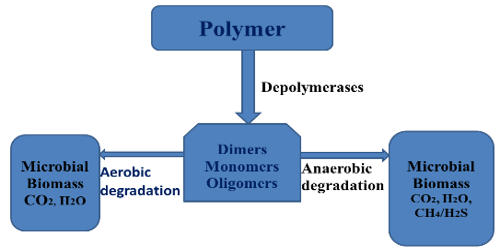In capital budgeting, the term hurdle rate is the minimum rate that a company wants to earn when investing in a project. Therefore, the hurdle rate is also referred to as the company’s required rate of return or target rate. For a company to further consider a project, its internal rate of return must equal or exceed the hurdle rate. It is also used to discount a project’s future cash flows to its net present value.
When companies evaluate projects, they set a rate that the projects must earn before they can be considered viable options. In a manner of speaking, the prospective projects must clear the ‘hurdle rate’.
A hurdle rate usually consists of 2 elements:
- The company’s cost of funds/cost of capital (which is usually the WACC, or weighted average cost of capital)
- A risk premium depends on the riskiness of a project.
Here’s the formula for calculating a hurdle rate:
Hurdle Rate = WACC + risk premium (to account for the risk associated with a projects cash flows)
Let’s say the cost of funds for ABC Inc. is 7% p.a. when evaluating projects. Managers at ABC Inc. would add a risk premium, say 4% p.a. for projects with more uncertain cash flows, while only adding 0.5% p.a. for projects that have predictable and less risky cash flows. This would yield a hurdle rate of 7% + 4% = 11% p.a. for risky projects and 7% + 0.5% = 7.5% p.a. for low risk projects.
By adding a risk premium to the cost of capital (WACC) in determining the hurdle rate, the managers of ABC Inc. can make a fair comparison between projects. Just because a low-risk project does not look as attractive on paper due to smaller potential cash flows, does not make it an unworthy selection. After including risk in the equation, the manager may well find that the low-risk project is actually expected to yield a higher net present value.
Hurdle rates are very important in the business world, especially when it comes to future endeavors and projects. Companies determine whether they will take on capital projects based on the level of risk associated with it. If an expected rate of return is above the hurdle rate, the investment is considered sound. If the rate of return falls below the hurdle rate, the investor may choose not to move forward. A hurdle rate is also referred to as a break-even yield.
There are two ways the viability of a project can be evaluated. In the first, a company decides based on the net present value (NPV) approach by performing a discounted cash flow (DCF) analysis.
Cash flows are discounted by a set rate, which the company chooses as the minimum rate of return needed for an investment or project; the hurdle rate. The value of the discounted cash flows depends on the rate used in discounting them. The overall cost of the project is then subtracted from the sum of the discounted cash flows using the hurdle rate to arrive at the net present value of the project. If the NPV is positive, the company will approve the project. Often companies use their weighted average cost of capital (WACC) as the hurdle rate.
In the second method, the internal rate of return (IRR) on the project is calculated and compared to the hurdle rate. If the IRR exceeds the hurdle rate, the project would most likely proceed.
In analyzing a potential investment, a company must first hold a preliminary evaluation to test if a project has a positive net present value (NPV). Care must be exercised, as setting a very high rate could be a hindrance to other profitable projects and could also favor short-term investments over the long-term ones. A low hurdle rate could also result in an unprofitable project.
Key considerations include:
- Risk premium – Assigning a risk value for the anticipated risk involved with the project. Riskier investments generally have greater hurdle rates than less risky ones.
- Inflation rate – If the economy is experiencing mild inflation, that may influence the final rate by 1%-2%. There are instances when inflation may be the most significant factor to consider.
- Interest rate – Interest rates represent an opportunity cost that could be earned on another investment, so any hurdle rate needs to be compared to real interest rates.
Often, a risk premium is assigned to a potential investment to denote the anticipated amount of risk involved. The higher the risk, the higher the risk premium should be, as it takes into consideration the fact that if the risk of losing your money is higher, so should the return on our investment be higher. A risk premium is typically added onto the WACC to arrive at a more appropriate hurdle rate.
Using a hurdle rate to determine an investment’s potential helps eliminate any bias created by preference toward a project. By assigning an appropriate risk factor, an investor can use the hurdle rate to demonstrate whether the project has financial merit regardless of any assigned intrinsic value.
For example, a company with a hurdle rate of 10% for acceptable projects would most likely accept a project if it has an IRR of 14% and no significant risk. Alternatively, discounting the future cash flows of this project by the hurdle rate of 10% would lead to a large and positive net present value, which would also lead to the project’s acceptance.
The limitations of using a hurdle rate –
It’s not always as straightforward as picking the investment with the highest internal rate of return. A few important points to note are:
- Hurdle rates can favor investments with high rates of return, even if the dollar amount (NPV) is very small.
- They may reject huge dollar value projects that may generate more cash for the investors but at a lower rate of return.
- The cost of capital is usually the basis of a hurdle rate and it may change over time.
Hurdle rates typically favor projects or investments that have high rates of return on a percentage basis, even if the dollar value is smaller. For example, project A has a return of 20% and a dollar profit value of $10. Project B has a return of 10% and a dollar profit value of $20. Project A would most likely be chosen because it has a higher rate of return, even though it returns less in terms of overall dollar value.
In addition, choosing a risk premium is a difficult task as it is not a guaranteed number. A project or investment may return more or less than expected and if chosen incorrectly, this can result in a decision that is not an efficient use of funds or one that results in missed opportunities.
Example of a Hurdle Rate –
Let’s take a look at a simplified example. Amy’s Hammer Supply is looking to purchase a new piece of machinery. It estimates that with this new piece of machinery it can increase its sales of hammers, resulting in a return of 11% on its investment. The WACC for the firm is 5% and the risk of not selling additional hammers is low, so a low-risk premium is assigned at 3%. The hurdle rate is then:
WACC (5%) + Risk premium (3%) = 8%
As the hurdle rate is 8% and the expected return on the investment is higher at 11%, purchasing the new piece of machinery would be a good investment.
Information Sources:
















